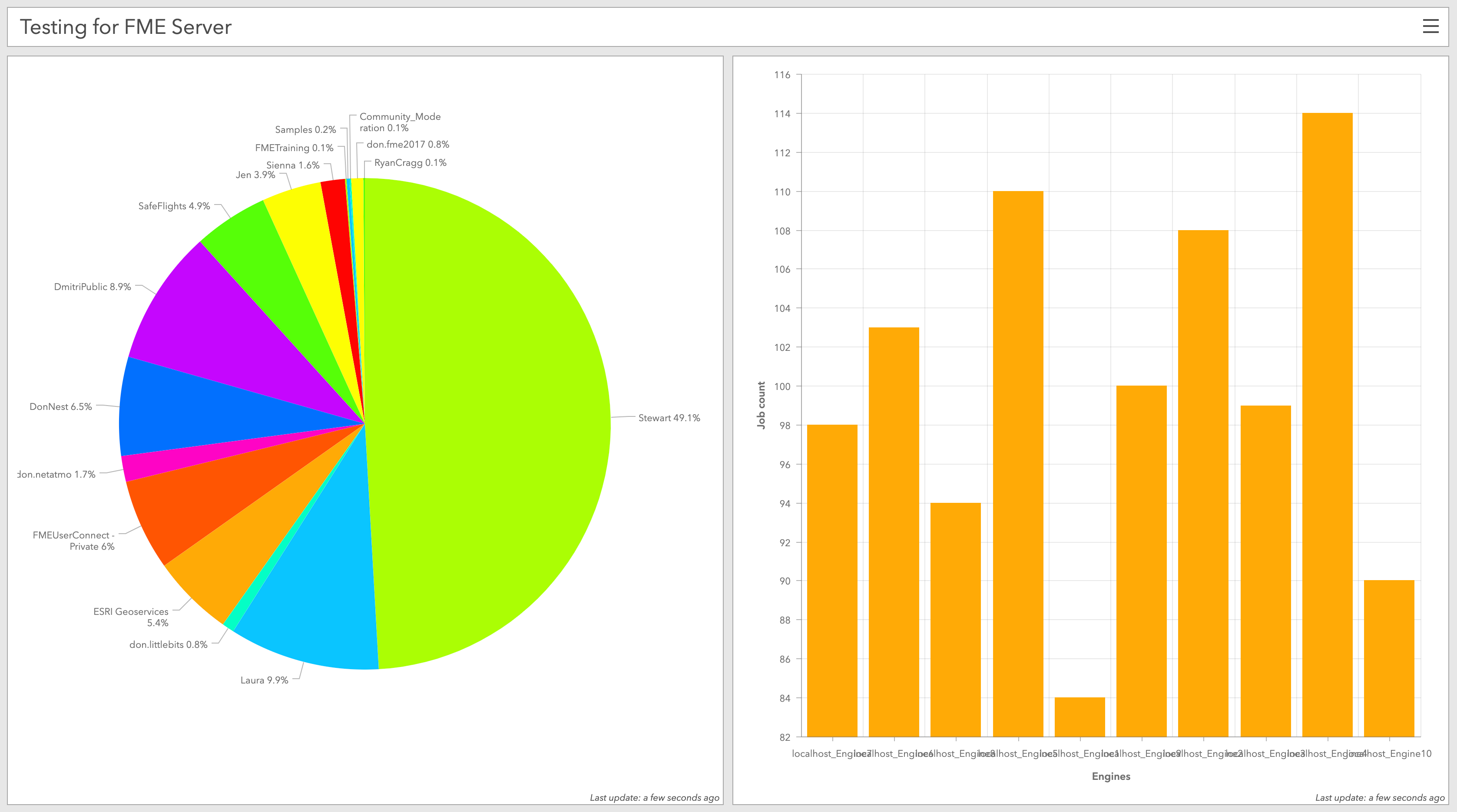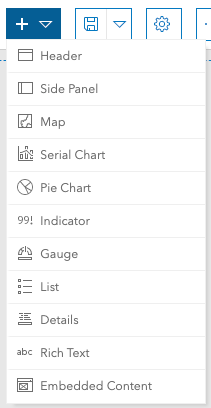I was wondering if there was further documentation on the FME server database. I'm looking to create a REST service from the database that we can use in conjunction with Operations Dashboard to show statistics about FME server in real-time (specifically things such as last time a job was ran, the status of the job, errors from the job (if any), run time, etc). Currently I'm harvesting data nightly to get a summary of the performance over the day, but it would be nice to be able to create a rest service that would show all the data together without having to heavily use an FME engine to push data to ArcGIS Enterprise (Portal) or ArcGIS Online.
Solved
Feature Service from FME Database/logs
Best answer by jlutherthomas
Hi @runneals
So I managed to get it working.
Here is a really basic dashboard (based on the last 1000 jobs):
 Basically, Esri have something called Koop that you can use to 'spoof' Feature Services.
Basically, Esri have something called Koop that you can use to 'spoof' Feature Services.
Koop does allow caching (benefits for spatial data so you're not always running FME Server jobs), but basically every time you view this dashboard, FME Server will get called (workspace calling the REST API) and get you the latest data. If the cache is expired it will go and get new data (you can configure cache timeout).
I'm hoping that soon I'll be able to put up an article on how to do this step-by-step for FME Server with a github repository.
For this you need to configure to Koop on Node JS (to connect to FME Server) behind NGINX (configured for reverse proxy and HTTPS) which makes Esri Feature Services, as long as the workspace returns JSON in the correct format.
I was initially playing with spatial geoservices for use in AGOL, but remembered this and adapted it for non-spatial too. If the set up doesn't scare you, then I'll let you know when the article/github repo goes up!
This post is closed to further activity.
It may be an old question, an answered question, an implemented idea, or a notification-only post.
Please check post dates before relying on any information in a question or answer.
For follow-up or related questions, please post a new question or idea.
If there is a genuine update to be made, please contact us and request that the post is reopened.
It may be an old question, an answered question, an implemented idea, or a notification-only post.
Please check post dates before relying on any information in a question or answer.
For follow-up or related questions, please post a new question or idea.
If there is a genuine update to be made, please contact us and request that the post is reopened.












